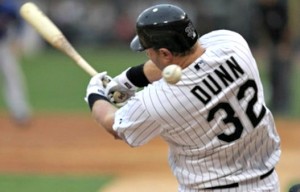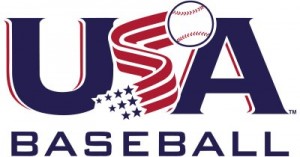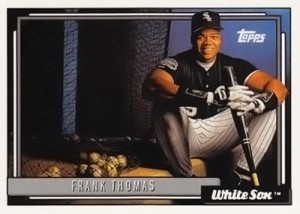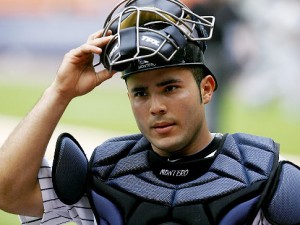With the DTBL Draft scheduled to begin later this week, teams are no doubt planning for their future. But before we go there, I’d like to take a moment to step back in time. One of my projects for this winter has been to retroactively calculate PAR stats for previous seasons. At a minimum, my goal was to complete the five most recent seasons to give me a decent sample size to analyze the numbers and provide a basis for something else I will be tackling down the road. So that is exactly what I did. PAR numbers have been calculated for all DTBL players dating back to the 2010 season. Eventually, I hope to get this completed all the way back to the beginning of the league, but it will be a slow process. But for now, I’d like to take a closer look at the five years worth of data I have compiled, draw some conclusions from the data and analyze how these numbers match up with the way league members valued players each year in the DTBL Awards votes. This will also be a bit of a look at league trends over this five year period.
First, I don’t want to assume you all remember every last detail about the Points Above Replacement statistic I introduced last summer. If you need a PAR primer, I highly recommend skimming through my introductory article. In an incredibly brief summary, the purpose of PAR is to determine a player’s value in terms of the number of points he contributes to his team in the standings over a replacement level player. In theory, a player with a 5.0 PAR means that the team earned approximately five more points in the standings than they would have if they had used a replacement level player to fill that roster spot instead.
Now it’s time to look at the results at a macro level. To assist with this, I quickly put together a new page which contains year-by-year league-wide totals in all statistical categories, including PAR. For now, that single table is the only thing on the page, but eventually I envision adding a lot more data and making it sort of a league almanac. Here it is. You may want to open that page in a new tab because I will be referencing it a bunch. For now, you can reach the page on the league site by clicking on the “Archives” header. I may move it elsewhere later though.
Since the idea behind the “replacement level” setting for PAR was a team full of players that would finish in last place in each category, I would expect the total PAR earned by every player in the league during the season to be approximately 450. That’s 45 points to be gained by nine non-last place finishing teams in each of the 10 categories. As you can see in that table I just linked, the league’s total PAR in the five years I have computed so far was very close to the expected 450 in the 2010-12 seasons, but has fallen well short each of the last two years. But when you break it out into batting PAR and pitching PAR, the results are not very close to the expected 225 in most cases. In most years, batters have fallen well short of the expected total while pitchers have far exceeded it. But I think there is a very logical explanation for this, and overall, I am pleased with the results so far. Here’s why:
As I mentioned in the initial PAR article, I decided to use a span of five years to set the replacement level baseline and determine the values needed to earn points in each category. I did this because I didn’t want huge fluctuations in the numbers used to compute PAR from one year to the next. So a player who puts up identical numbers in consecutive years should have more or less the same PAR. But the downside to using a five year sample is that drastic shifts in league-wide stat totals throws the baseline out of whack. And that’s exactly what has happened in this league for over a decade now. Offensive numbers have been on a steady decline since the heart of the steroid era and pitching numbers have drastically improved. Looking at that table again, you will see that with the exception of 2012, the league batting average and ERA have gone down every season since 2006. The last two years, in particular, have seen incredible drops in offensive production. 2014 was the first season since this league expanded to 10 teams in 1998 that DTBL players failed to accumulate 1000 runs scored. The league ERA and WHIP were at all time lows, by a fairly comfortable margin.
Because these trends have been consistently heading in one direction over the five years I’ve examined so far (really, it’s nine years since the ’10 PAR calculations include numbers dating back to ’06), the season in question was always being compared to a sample set of five years with higher offensive output and less impressive pitching stats. Therefore, batters failing to accumulate a league-wide total of 225 PAR is to be expected. The extent to which hitters have failed to reach 225 PAR has exceeded the amount in which pitchers have gone past that number in most seasons. This is because pitching PAR contains two stats that have been extremely consistent from year-to-year and aren’t particularly affected by the lack of offense in recent years: wins and saves. So while hitters have at least four categories that have seen tumbling totals (AVG, HR, RBI, R), the effect on pitching stats has been mostly limited to three categories (ERA, WHIP, K).
Once I finally start to compute PAR in seasons that didn’t have a drastic change in league totals compared to the previous five seasons, we should start to see these numbers come much closer to the expected values. Actually, we already have one such season in 2012. 2012 was actually a slightly better year for hitters than the previous two seasons and was right in line with the five year averages from ’08-’12. So it is encouraging to see that the batting and pitching PAR totals were both right around 225 that year. In conclusion from looking at the league PAR totals, the numbers may seem out of whack and pitchers are certainly earning points at a higher rate than hitters, but I do not think this negates the value of the stat. You just need to keep these things in mind when determining how you personally value each player.
Now I’d like to take a look at the top PAR earning batters and pitchers in each of the five seasons and see how those players finished in the DTBL MVP and Cy Young votes in the corresponding season. The reason why I think this is something worth looking at is to see how the value league members have placed on particular players has matched up with the value determined by PAR.
2014
| PAR rank | Batter | MVP finish | Pitcher | CY finish |
|---|---|---|---|---|
| 1st | Mike Trout | 1st | Clayton Kershaw | 1st |
| 2nd | Jose Altuve | 4th | Johnny Cueto | 2nd |
| 3rd | Michael Brantley | 5th | Felix Hernandez | 3rd |
| 4th | Giancarlo Stanton | 2nd | Corey Kluber | 4th |
| 5th | Jose Bautista | 7th | Adam Wainwright | 5th(t) |
2014 was the first season in which voters actually had PAR numbers to reference if they were so inclined. Not surprisingly, the PAR numbers back up the voters, especially for Cy Young. Victor Martinez finished 3rd in the MVP vote despite finishing 6th in PAR, but this is mainly due to his position value. But that’s a whole different topic for another time. It appears Jose Altuve was slightly undervalued by voters, at least if PAR is to be trusted, since he was just barely behind Trout in PAR.
2013
| PAR rank | Batter | MVP finish | Pitcher | CY finish |
|---|---|---|---|---|
| 1st | Miguel Cabrera | 1st | Clayton Kershaw | 1st |
| 2nd | Chris Davis | 2nd | Max Scherzer | 2nd |
| 3rd | Mike Trout | 4th | Adam Wainwright | 4th |
| 4th | Paul Goldschmidt | 3rd | Yu Darvish | 3rd |
| 5th | Adam Jones | 5th | Cliff Lee | 6th |
The ’12-’13 seasons featured hotly contested debates on Miguel Cabrera vs. Mike Trout for AL MVP. It was a little more clear cut in this league though, at least in ’13, with Cabrera having the superior fantasy stats. It’s also interesting to see how close Kershaw and Scherzer were to each other in both PAR and the Cy Young vote. The result was the same in each, with a slight edge to Kershaw. A little sad to see those 4th and 5th place names on the pitching side in light of their current arm injuries.
2012
| PAR rank | Batter | MVP finish | Pitcher | CY finish |
|---|---|---|---|---|
| 1st | Mike Trout | 2nd | Justin Verlander | 2nd |
| 2nd | Ryan Braun | 3rd | David Price | 1st |
| 3rd | Miguel Cabrera | 1st | Clayton Kershaw | 3rd |
| 4th | Josh Hamilton | 4th | Gio Gonzalez | 4th |
| 5th | Andrew McCutchen | 5th | Matt Cain | 6th(t) |
Now this is where things get interesting. PAR disagrees with both the MVP and Cy Young selections from ’12. I wouldn’t classify either as egregious errors by the voters though. Cabrera and Price both helped lead the Naturals to the championship that season, so they probably earned a slight edge over Trout, Braun and Verlander in the minds of some for that reason alone. Also, the PAR differences were minimal anyway. Having said that, Trout’s 10.8 PAR is the highest single season number we’ve seen for a batter in the five years I’ve calculated so far, yet he didn’t win the MVP. I should note that Craig Kimbrel finished 5th in the Cy Young vote in both ’12 and ’13, but relief pitchers have almost no chance of finishing near the leaders in pitching PAR. Make of that what you wish.
2011
| PAR rank | Batter | MVP finish | Pitcher | CY finish |
|---|---|---|---|---|
| 1st | Matt Kemp | 1st | Justin Verlander | 1st |
| 2nd | Jacoby Ellsbury | 3rd | Clayton Kershaw | 2nd |
| 3rd | Ryan Braun | 2nd | Roy Halladay | 3rd |
| 4th | Curtis Granderson | 4th | Cliff Lee | 4th |
| 5th | Jose Bautista | 6th | Jered Weaver | 5th |
This is another season where the PAR rankings closely match the award voting results. Remember when Matt Kemp was the best player in baseball? It was only four years ago! Meanwhile, Verlander was a unanimous Cy Young selection in ’11 and also accumulated the highest PAR I have calculated to date (16.3), barely edging out Kershaw’s ’14 campaign.
2010
| PAR rank | Batter | MVP finish | Pitcher | CY finish |
|---|---|---|---|---|
| 1st | Carlos Gonzalez | 2nd | Roy Halladay | 1st |
| 2nd | Albert Pujols | 1st | Adam Wainwright | 2nd |
| 3rd | Joey Votto | 4th | Felix Hernandez | 3rd |
| 4th | Miguel Cabrera | 3rd | Ubaldo Jimenez | 5th |
| 5th | Carl Crawford | 7th | C.C. Sabathia | 4th |
Finally, 2010 saw Pujols edge out CarGo for the MVP award despite finishing slightly behind him in PAR. But that was an extremely tight MVP vote as well with Pujols winning despite only receiving three first place votes. Less than a point separated the two in PAR. On the pitching side, the two lists were nearly identical.
To me, all of the above points out that PAR is a pretty good representation of the value most league members have placed on players in recent years and helps indicate that no player has been clearly snubbed from a post-season award either. I hope to do more analysis like this as I continue to compute PAR values from previous seasons.
With the draft starting this week, you may be contemplating whether or not you are going to consider PAR when making your selections. Let me offer a little unsolicited advice and provide some guidance for you if you are going to go that route. If you are already using a set of stat projections to assist you with your drafting process, it may be worthwhile to calculate a player’s projected PAR too. This could be particularly useful if you are debating between two players with completely different skill sets. However, you should also consider position scarcity and not necessarily draft the player capable of posting the highest PAR. 2014 PAR calculations for all draft eligible players can be found on the “Free Agents” page. But I want to give you a huge heads up that these numbers are close to meaningless for players who were not active for the full season last year. The PAR calculation assumes they played the full season, which is probably not the case for a majority of the players. Same goes for the PAR numbers you see on the individual team pages right now.
In case you are interested in calculating 2015 projected PAR for players, I have pasted the formulas below for both batters and pitchers. These are the numbers that were used to compute the ’14 PAR totals and will be used during this season as well. The only difference is these formulas are assuming full season stats. So if your projected numbers aren’t full season, the PAR is probably going to be a little low. Anyway, you can plug this formula into Excel, and replace the stat names with the projected values you wish to use.
Batting PAR:
=((((H+1775)/(AB+6912))-0.2567)/0.0028) + ((HR-15.05)/9.67) + ((RBI-63.25)/24.48) + ((R-65.19)/24.34) + ((SB-7.68)/9.48)
Pitching PAR:
=((((ER+495.13)*9/(IP+1140.0))-3.909)/-0.095) + ((((BB+H+1469.73)/(IP+1140.0))-1.2893)/-0.0174) + ((W-7.57)/2.75) + ((SV-5.56)/9.57) + ((K-114.47)/31.91)
Of course, these formulas aren’t very useful without numbers to plug into them. I’m not going to recommend any particular projection set though because I think it is best to leave that up to you to decide. It wouldn’t be much fun if we were all reading from the same sheet of music. However, I will recommend checking out FanGraphs, where they have several sets of 2015 stat projections available.
Happy drafting!





 The projections systems have the bottom of the DTBL standings in 2012 looking pretty much the same as in 2011. The Mavericks, Cougars and Gators are projected to place eighth, ninth and tenth, respectively
The projections systems have the bottom of the DTBL standings in 2012 looking pretty much the same as in 2011. The Mavericks, Cougars and Gators are projected to place eighth, ninth and tenth, respectively